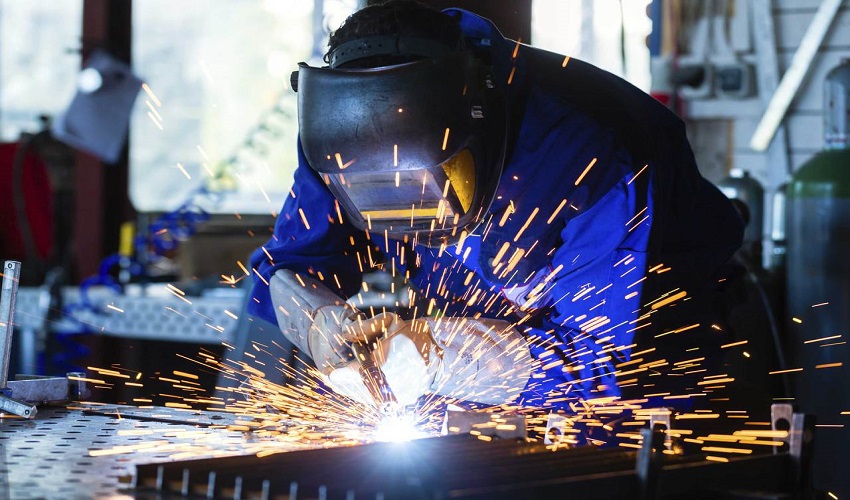Best Steel Fabricators Melbourne: Transforming Ideas right into Fact
Best Steel Fabricators Melbourne: Transforming Ideas right into Fact
Blog Article
Cutting-edge Trends in Steel Fabrication: Enhancing Resilience and Precision
In the realm of steel construction, the quest of longevity and precision has led to a wave of cutting-edge patterns that are reshaping the market. These fads are not simply forming the present however additionally laying the groundwork for the future of steel fabrication, assuring more improvements in resilience and precision.
Advanced Welding Technologies
In the world of steel fabrication, the adoption of advanced welding innovations has considerably transformed the sector's technique to accomplishing exceptional quality and accuracy in architectural welds. Advanced welding innovations, such as laser beam of light welding and friction stir welding, have actually arised as game-changers in the field. Laser beam of light welding utilizes a focused laser beam to join steel parts with impressive precision and rate, making it perfect for thin products and detailed layouts. On the other hand, friction mix welding develops unbelievably solid bonds by mechanically intermixing the particles of the materials at the joint, removing the demand for melting the metal. These technologies offer countless advantages, including minimized heat-affected zones, minimal distortion, and boosted mechanical homes in the welded joints. By leveraging these innovative welding techniques, steel makers can raise the sturdiness, strength, and accuracy of their structural welds, satisfying the progressively requiring requirements of modern-day building projects.
Robotic Automation in Manufacture
Embracing robot automation has actually become a foundation of modern-day steel fabrication methods, enhancing and improving procedures performance throughout the sector. Robots are changing the way steel components are produced, using unequaled precision and speed while decreasing human error. These automated systems can manage recurring jobs with consistent accuracy, resulting in higher high quality end items.
One secret benefit of robot automation in steel manufacture is the capacity to function all the time without tiredness, dramatically raising manufacturing result. This continual procedure minimizes downtime and accelerates task timelines, inevitably conserving prices for manufacturers. In addition, robotics can be set to execute detailed tasks that may be challenging or dangerous for human employees, improving security in the workplace.
Moreover, robot automation makes it possible for smooth combination with various other digital innovations, such as computer-aided layout (CAD) software and Web of Points (IoT) systems (steel fabrication melbourne). This interconnected strategy enhances communication in between various phases of manufacture, enhancing workflows and ensuring real-time monitoring and control. As the steel construction sector proceeds to develop, robotic automation stands apart as a transformative pressure driving effectiveness and accuracy in making processes

High-Strength Alloy Advancement
The innovation of high-strength alloy development in steel fabrication is reshaping the industry's method to boosting material toughness and efficiency. High-strength alloys are crafted to display remarkable mechanical homes, such as increased tensile strength, toughness, and deterioration resistance contrasted to typical steel qualities. By incorporating these sophisticated alloys right into manufacture procedures, manufacturers can generate parts that stand up to greater tension levels and harsh environments, leading to even more sturdy and trustworthy final product.
One trick advantage of high-strength alloy development is the ability to minimize product density without compromising structural stability. This not just leads to lighter-weight components but additionally adds to cost financial savings and enhanced efficiency in fabrication and assembly procedures. The enhanced strength-to-weight proportion of these alloys allows for the layout and construction of frameworks with higher load-bearing abilities while minimizing total weight.
3D Modeling and Simulation Software Application
Developments in steel construction procedures have actually been considerably propelled by the assimilation of sophisticated 3D modeling and simulation software program devices. These devices permit producers to create comprehensive virtual models of their projects, enabling them to imagine the last product additional info with precision before any physical work starts.

Lasting Practices in Steel Production
Integrating lasting methods right into steel production processes is important for decreasing environmental their explanation influence and guaranteeing lasting source accessibility. One vital sustainable method is the fostering of energy-efficient innovations to lower greenhouse gas exhausts during the steel production procedure. This includes utilizing renewable resource sources, such as solar or wind power, to power steel plants and applying energy-efficient equipment to enhance power use.
Another essential facet of sustainable steel production is the accountable sourcing of raw products. This involves ensuring that the iron ore and various other sources utilized in steelmaking are obtained from moral and ecologically pleasant resources. By advertising openness in the supply chain and sticking to strict environmental requirements, steel suppliers can minimize the adverse impacts of source removal on neighborhood communities and neighborhoods.

Final Thought
To conclude, the innovative fads in steel manufacture such as innovative welding innovations, robotic automation, high-strength alloy growth, 3D modeling and simulation software program, and sustainable practices are improving the sturdiness and accuracy of steel products. These innovations are revolutionizing the steel manufacture market by enhancing sustainability, top quality, and efficiency. It is clear that the future of steel construction hinges on accepting these advanced modern technologies to satisfy the needs of modern building and construction and manufacturing sectors.
In the world of steel like it manufacture, the pursuit of longevity and precision has led to a wave of ingenious fads that are improving the market.In the realm of steel construction, the fostering of cutting-edge welding modern technologies has substantially revolutionized the market's strategy to achieving superior quality and accuracy in structural welds. As the steel construction sector continues to progress, robot automation stands out as a transformative pressure driving efficiency and precision in manufacturing processes.
Moreover, reusing and recycling steel scrap and waste materials play a substantial role in improving the sustainability of steel manufacturing. steel fixing.In verdict, the innovative trends in steel fabrication such as sophisticated welding modern technologies, robot automation, high-strength alloy growth, 3D modeling and simulation software, and lasting practices are enhancing the resilience and precision of steel products
Report this page